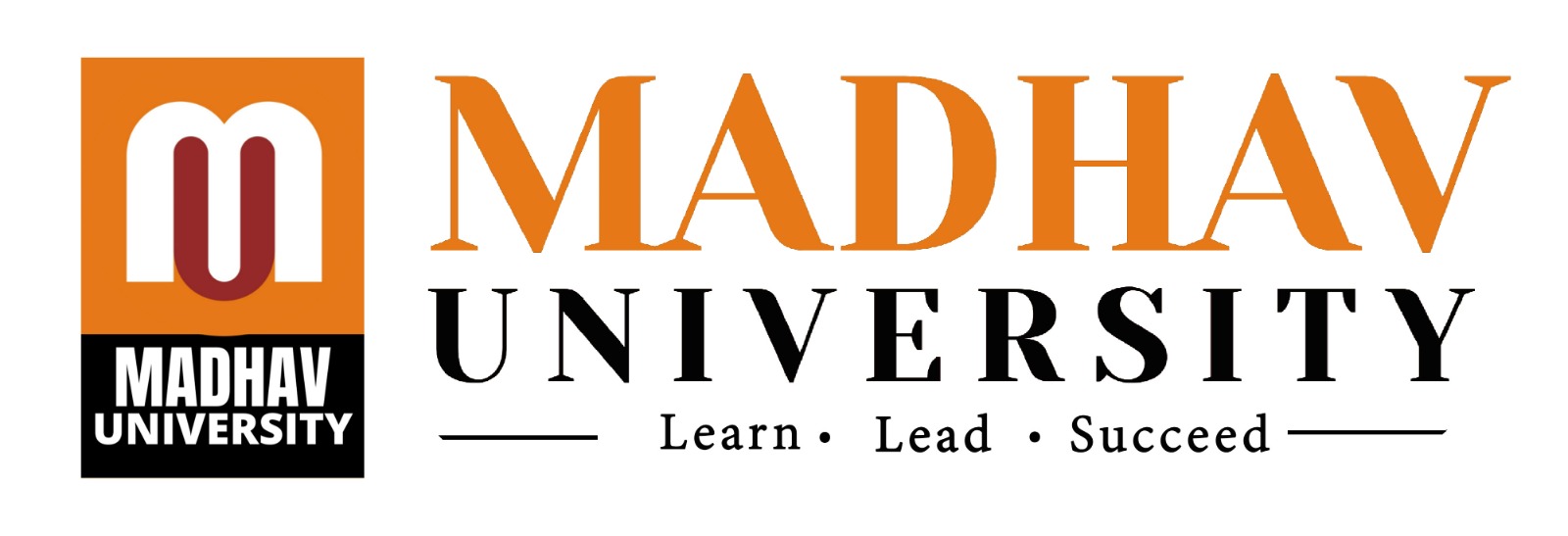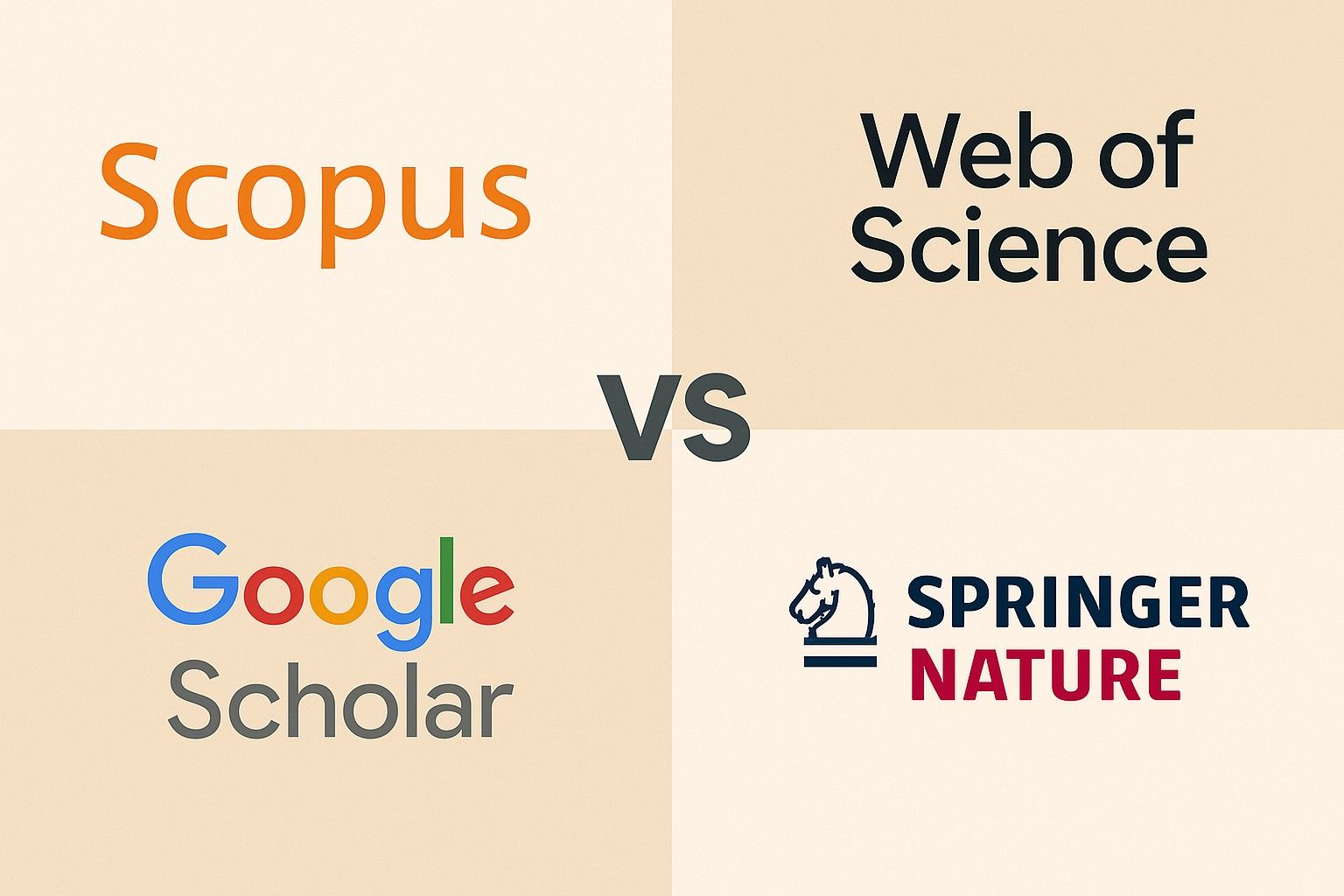In academic research, selecting reliable sources and databases is critical for ensuring the credibility and accuracy of scholarly work. Among the most widely used platforms for academic literature are Scopus, Web of Science (WoS), Google Scholar, and Springer Nature. Each has unique features, strengths, and drawbacks. This comparison explores these aspects under key parameters such as coverage, quality control, user interface, metrics, accessibility, and target users.
Scopus, Web of Science, Google Scholar, and Springer Nature (specifically, their publishing platforms) are all valuable resources for academic research, each with its own strengths and weaknesses. Scopus and Web of Science are comprehensive bibliographic databases, offering citation analysis and advanced search features. Google Scholar is a broader search engine for academic literature, including pre-prints and gray literature, but may have inconsistencies in accuracy. Springer Nature is a major academic publisher, indexing its journals in various platforms.
1. Overview
Here’s a more detailed comparison:
Scopus and Web of Science:
Scope:
Both cover a wide range of disciplines, with Scopus potentially offering broader coverage across various fields.
Citation Analysis:
They provide robust citation analysis tools, allowing users to track citations and identify influential publications.
Indexing:
Scopus and Web of Science primarily index refereed journal articles, and their indexing process can be slower than Google Scholar.
User Interface:
Both platforms have a more complex user interface compared to Google Scholar.
Coverage:
Scopus has been shown to have a wider journal range and more comprehensive coverage in fields like Chemistry and Material Sciences.
Google Scholar:
Scope:
Google Scholar covers a broader range of materials, including pre-prints, dissertations, technical reports, and gray literature.
Indexing:
It indexes papers more quickly than Scopus and Web of Science, sometimes even before they are formally published.
User Interface:
Google Scholar has a simple, user-friendly interface similar to Google Search.
Accuracy:
While its indexing is faster, Google Scholar may contain inaccurate or duplicated records.
Author Profiles:
Google Scholar allows researchers to create public profiles, which can help them track their own publications.
Springer Nature:
Focus:
Springer Nature is a major publisher of scientific journals, books, and other scholarly works.
Indexing:
Springer Nature journals are indexed in various databases, including Google Scholar, Scopus, Web of Science, and PubMed.
Publishing:
Springer Nature provides platforms for authors to submit and publish their research.
Key Differences and Considerations:
Indexing Speed:
Google Scholar indexes more rapidly than Scopus and Web of Science.
Content Scope:
Google Scholar covers a wider range of materials, while Scopus and Web of Science focus on peer-reviewed journals.
User Interface:
Google Scholar is simpler to use, while Scopus and Web of Science have more advanced features and a potentially steeper learning curve.
Accuracy:
Scopus and Web of Science are known for their rigorous selection of sources, while Google Scholar may include some erroneous or duplicated records.
Citation Analysis:
Scopus and Web of Science offer advanced citation analysis tools, while Google Scholar provides basic citation tracking.
Scopus
Developed by Elsevier, Scopus is a large abstract and citation database of peer-reviewed literature, including journals, books, and conference proceedings.
Web of Science
Managed by Clarivate Analytics, WoS includes high-impact journals across various fields with comprehensive citation tracking.
Google Scholar
A free search engine from Google that indexes scholarly articles from multiple formats and disciplines.
Springer Nature
A publishing group that provides access to books, journals, and conference proceedings, known for high-impact publications like Nature.
2. Coverage
Scopus
Includes ~25,000+ peer-reviewed titles, covering journals, books, and conference proceedings in multiple disciplines.
Web of Science
Covers ~21,000+ journals with a focus on high-impact, peer-reviewed literature.
Google Scholar
Indexes millions of documents including articles, theses, preprints, and reports from various sources.
Springer Nature
Publishes ~3,000+ journals and a wide range of books, primarily in science and medicine.
3. Quality and Peer Review
Scopus
Uses a Content Selection & Advisory Board (CSAB) to maintain high standards.
Web of Science
Highly selective with rigorous editorial and publishing standards.
Google Scholar
Indexes both peer-reviewed and non-reviewed content without strict quality control.
Springer Nature
Publishes peer-reviewed and curated content within its platform.
4. Citation Metrics and Impact
Scopus
Provides metrics such as h-index, CiteScore, SNIP, and SJR.
Web of Science
Offers Impact Factor, h-index, and Journal Citation Reports.
Google Scholar
Includes h5-index and auto-generated author metrics.
Springer Nature
Focuses on journal-level metrics like Impact Factor and Altmetrics.
5. User Interface and Search Features
Scopus
Advanced search, citation tracking, and visual analytics.
Web of Science
Citation mapping, author disambiguation, and robust filtering.
Google Scholar
Simple interface with minimal filtering options.
Springer Nature
User-friendly for browsing and accessing publisher content.
6. Accessibility and Cost
Scopus
Subscription-based with institutional access.
Web of Science
Requires subscription; commonly accessed through institutions.
Google Scholar
Freely accessible with no login required.
Springer Nature
Subscription-based, with some open-access content.
7. Target Audience and Use Cases
Scopus
Ideal for academics and researchers conducting bibliometric analysis.
Web of Science
Used by researchers and evaluators for high-standard citation data.
Google Scholar
Best for students and general researchers needing broad access.
Springer Nature
Valuable for domain-specific researchers in STM fields.
8. Strengths and Weaknesses Summary
Scopus
Strengths: Broad peer-reviewed coverage and analytics. Weaknesses: Subscription cost.
Web of Science
Strengths: High selectivity and historical data. Weaknesses: Smaller journal base.
Google Scholar
Strengths: Free and wide coverage. Weaknesses: Lack of quality control.
Springer Nature
Strengths: High-quality journals. Weaknesses: Limited to its own publications.
Final Thoughts
Each platform serves a specific purpose in the research landscape. Scopus and Web of Science are best suited for rigorous academic and bibliometric research. Google Scholar offers accessibility and breadth of content, making it ideal for initial exploration and broad searches. Springer Nature provides high-quality publisher-curated content, especially valuable for researchers in science and technology. The ideal approach is to use these platforms complementarily to leverage their respective strengths.
In Conclusion:
The best choice of database or platform depends on your research needs and preferences. Google Scholar is a good option for a quick overview of research or when you need to find grey literature, while Scopus and Web of Science are more suited for in-depth citation analysis and research in specific fields. Springer Nature, as a publisher, provides a platform for publishing research and indexing it in various databases.
– Dr. Preenon Bagchi, Dean
Faculty of Engineering and Technology, Madhav University

